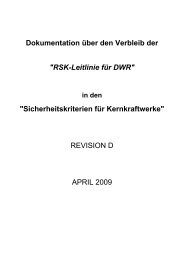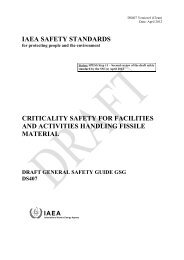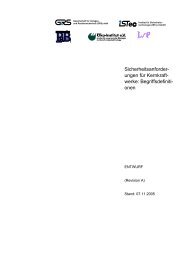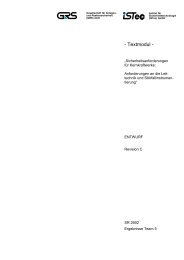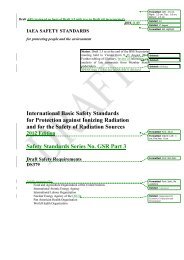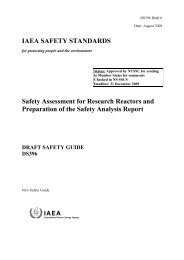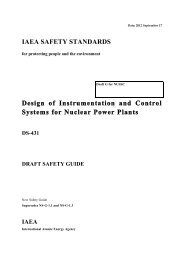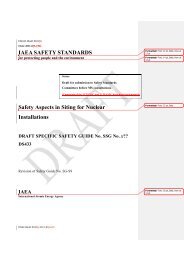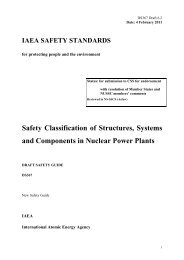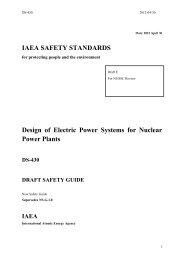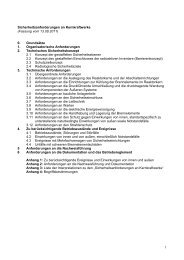IAEA SAFETY STANDARDS Construction for Nuclear Installations
IAEA SAFETY STANDARDS Construction for Nuclear Installations
IAEA SAFETY STANDARDS Construction for Nuclear Installations
You also want an ePaper? Increase the reach of your titles
YUMPU automatically turns print PDFs into web optimized ePapers that Google loves.
elevant parties. The construction programme should be fully integrated with a procurement<br />
programme highlighting long lead in items. The regulatory bodies involved should be given<br />
regular and timely updates of the construction schedule.<br />
5.3 The planning, scheduling and work sequence should include hold and witness points<br />
as necessary. Some may be specified by the licensee and regulatory body.<br />
5.4 The construction planning, scheduling and work sequence should include<br />
requirements <strong>for</strong> off-site manufacturing and assembling under an adequate quality assurance<br />
programme.<br />
5.5 The examination of specifications, documents and drawings, and plans and schedules<br />
should identify which on-site manufacturing, assembling, installation, and inspection and<br />
testing activities should be per<strong>for</strong>med.<br />
5.6 The construction organization should confirm the adequacy of construction methods<br />
with reference to the principal designer 9<br />
where necessary. There should be regular meetings<br />
at which the contractor‟s methods are discussed with the design team. There is the potential<br />
<strong>for</strong> the contractor‟s methods to undermine design assumptions. Conversely, early contractor<br />
involvement can assist the designer in the appreciation of the contractor‟s preferred method of<br />
construction and thus improve constructability.<br />
5.7 <strong>Construction</strong> sequencing should ensure prior construction work (such as embedded<br />
items in walls or ground) will not be adversely affected by later construction works. Special<br />
9 Principal designer (or design authority) refers to the organization responsible <strong>for</strong> establishing the design<br />
requirements and ensuring that design output documents accurately reflect the design basis. The principal<br />
designer is responsible <strong>for</strong> design control and ultimate technical adequacy of the design process.<br />
34





